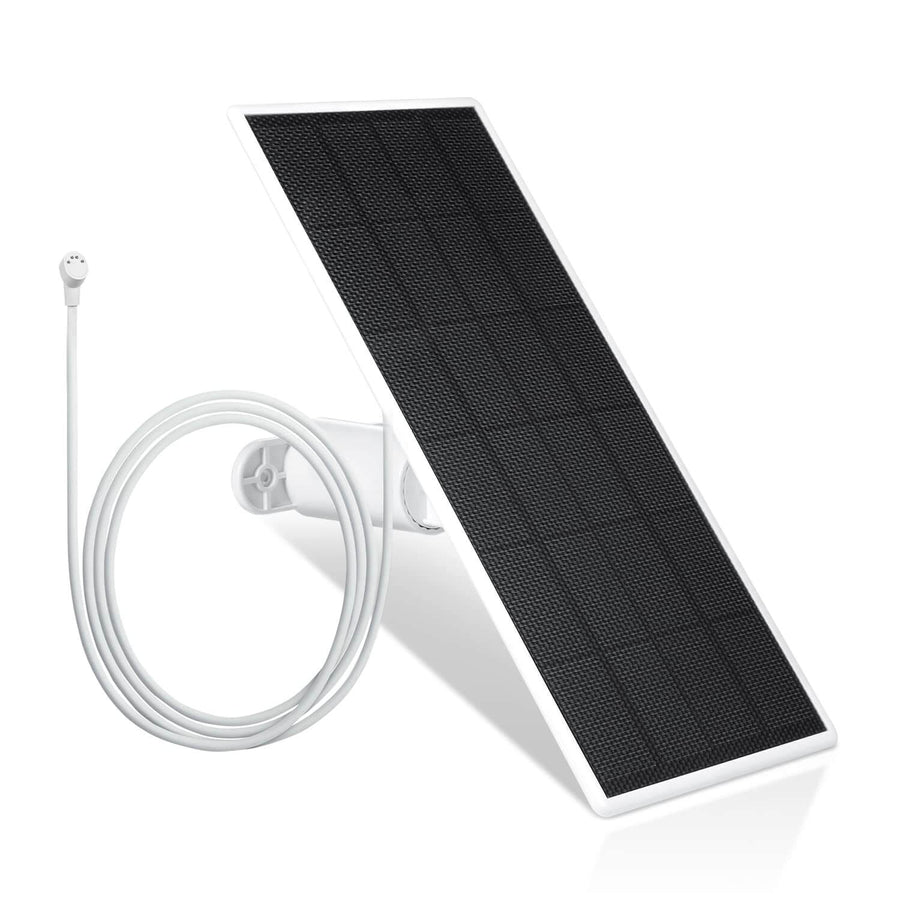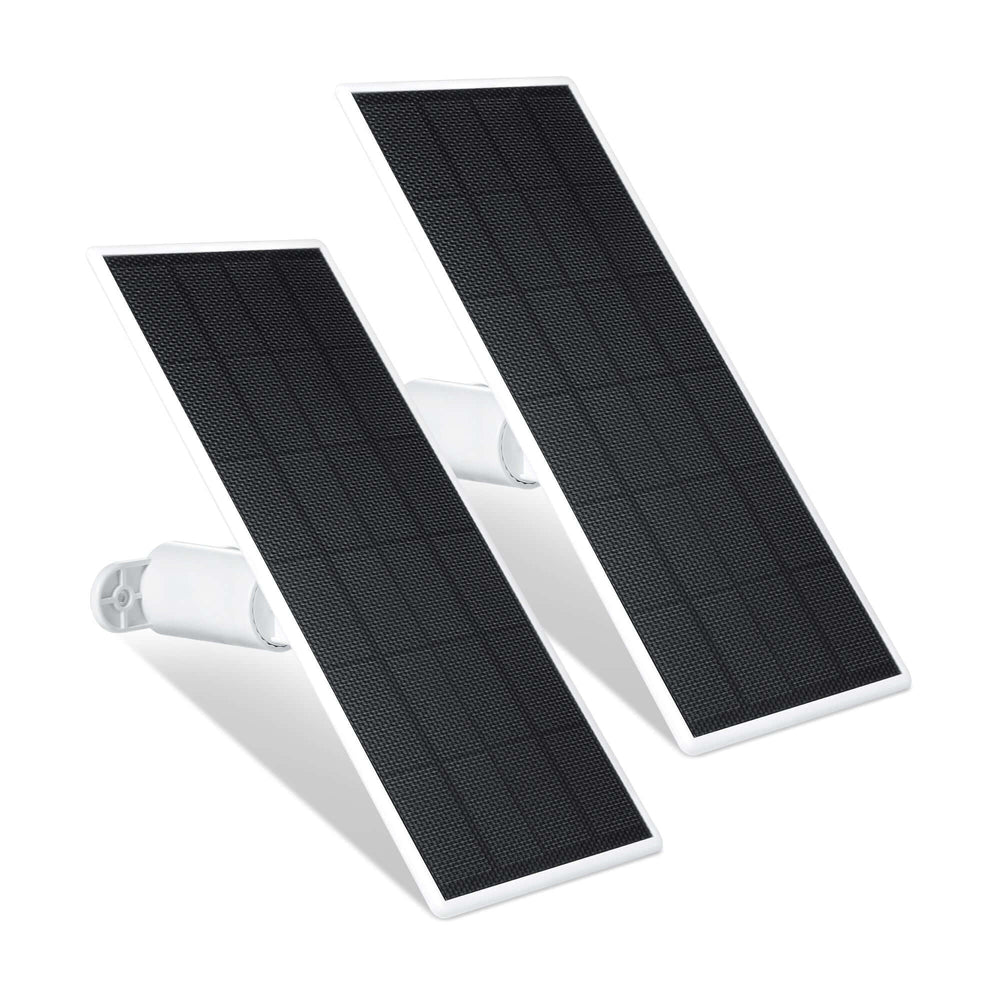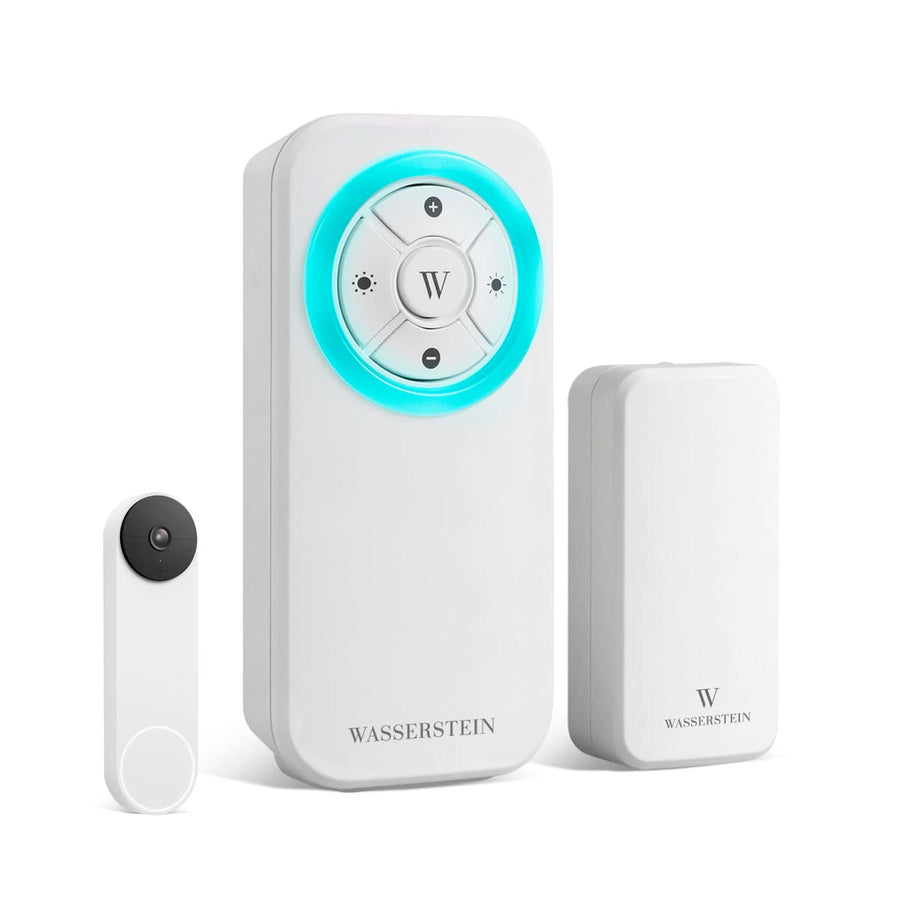Security Camera Installation Cost: All You Need to Know in 2025
Summary:
- Per-Camera Costs: Wired cameras run $100–$500 each, wireless $50–$250 each, with higher-resolution models costing more.
- Labor Expenses: Professional installation costs $50–$150 per hour or $80–$200 per camera, depending on complexity and region.
- Setup Types: Single-camera installs average $150–$500; 4–8-camera systems $600–$3,000; high-end commercial setups $5,000+.
- Equipment & Storage: Expect $15–$300 for mounts/cables, $100–$500 for DVR/NVR, and $3–$30/month per camera for cloud storage.
- Cost Drivers: Total price hinges on system type (wired vs. wireless), number of cameras, installation complexity, smart-home integration, and storage choice.
Home security has evolved rapidly, and in 2025, having a reliable security camera system has become a necessity. Whether you're looking to safeguard your home, business, or rental property, understanding the security camera installation cost is key to making informed decisions. From standalone indoor cameras to expansive wired CCTV systems, the total cost can vary dramatically based on factors like the number of cameras, installation complexity, and smart home integration.
In this guide, we’ll break down everything you need to know about surveillance camera installation costs in 2025, helping you find the best setup for your needs and budget.
👉 Explore smart cameras and accessories:
Wasserstein Security Camera Collection
Security Camera Installation Cost Breakdown (Updated for 2025)

Whether you’re upgrading a single camera or installing a complete security system, knowing the typical costs involved can help you plan better and avoid surprise expenses. In 2025, prices vary based on the type of system, number of cameras, labor, and add-ons like storage or monitoring. How much does security camera installation cost depends on several installation cost factors, including camera type, placement, and whether you choose professional or DIY installation. Here’s a closer look at what you can expect to spend:
Average Cost per Camera
- Wired Cameras ($100–$500 each): These offer reliable, high-resolution footage with fewer connectivity issues but require professional installation.
- Wireless Cameras ($50–$250 each): Ideal for DIY setups, wireless cameras are easier to install and move, but may need more frequent maintenance or charging.
- Higher quality cameras, such as those with 2K or 4K resolution, will increase the price per unit but provide better image clarity and night vision.
- Modern surveillance cameras often include features like AI detection, cloud storage, and remote access, which can also impact cost.
Labor Costs
- Hourly Rate ($50–$150): Labor rates vary by region and installer expertise.
- Per Camera ($80–$200): Wired camera installs take more time and often require electrical work, driving up the cost per unit.
- Security camera installation labor is a significant part of the total cost to install cameras, especially for complex systems or when hiring professionals.
Cost per Installation Type
- Single-Camera Setup ($150–$500): Best for small spaces or specific entry points, this setup includes a camera, labor, and basic configuration.
- Multi-Camera Systems (4–8 cameras) ($600–$3,000): Covers multiple entry points and outdoor areas; costs vary based on wiring and integration needs. A setup with four cameras is common for homes and small businesses, and costs will scale accordingly as you add more cameras.
- High-End Commercial Setups ($5,000+): Large buildings or businesses may need advanced features like facial recognition, extensive cabling, and 24/7 monitoring.
- Professional installations by a security camera company offer expertise, efficiency, and warranties, making them a preferred choice for many property owners.
Accessories & Equipment
- Mounting Brackets, Cables, PoE Switches ($15–$300): Essential for proper installation, especially with wired systems or challenging placements.
- DVR (Digital Video Recorder) ($100–$300): Common in wired setups, DVRs store footage from analog cameras.
- NVR (Network Video Recorder) ($150–$500): Used with IP cameras, NVRs allow for high-resolution digital recording and remote access.
- Hard Drive Storage ($50–$100): Local storage for footage if you’re not using the cloud.
- Cloud Storage Subscriptions ($3–$30/month per camera): Required for remote access, motion-based recording, and app integration.
- High-resolution footage and longer retention periods require more storage space and video storage space, which can increase costs if you need to store more data.
- Smoother video quality from higher frame rates also requires more storage space, so consider this when choosing your system.
Monitoring Services
- Professional Monitoring ($100–$600/year): Adds an extra layer of security with 24/7 surveillance and automatic alerts to emergency services.
- Alarm Integration ($25–$200): Connects your cameras to home alarm systems, allowing synced alerts and responses during security breaches.
Factors That Affect Security Camera Installation Costs
Before you commit to installing a new security system, it’s important to understand what drives the price up—or down. Installation cost factors include camera placement, wiring, storage options, environmental requirements, and the specific features you choose. From the type of camera to the complexity of the install, every decision you make can affect your final bill. Below are the biggest factors influencing security camera installation costs in 2025.
Type of Camera System
The kind of security camera system you choose is often the biggest cost driver. Some setups are more affordable up front, while others cost more but offer better performance and security long-term.
-
Wired CCTV systems typically cost more to install because they involve running cables through walls or ceilings. However, they provide stable performance and don’t rely on Wi-Fi.

- Wireless security cameras are easier and cheaper to install, making them ideal for renters and smaller homes. They offer flexible placement but may be less reliable in poor network conditions.
- Analog CCTV systems are often the most budget-friendly but come with lower resolution and fewer features.
-
IP cameras deliver better resolution and allow for remote viewing and cloud-based storage. They’re popular in modern setups.

- Smart cameras integrate with platforms like Alexa, Google Home, and Apple HomeKit, offering convenience and automation—at a slightly higher cost.
👉 Learn more: Types of Security Cameras
Number of Cameras Needed
The more cameras you need, the more you’ll pay for both the equipment and installation labor. Your total will depend on how much coverage your home or property requires.
- A single camera may be enough for a front door or hallway and usually costs between $150–$350 installed.
- A standard 4-camera system, covering key areas like entryways, the driveway, and the backyard, can cost $600–$1,200.
- Expanding to 8 cameras for complete coverage around a larger home or small business can cost $1,200–$2,800 or more.
Each added camera increases wiring complexity (for wired systems) or bandwidth requirements (for wireless systems).
Installation Complexity
Not all installations are created equal. The physical difficulty of the install directly impacts how long it takes and how much you’ll pay in labor.
- Simple installations, like mounting wireless indoor cameras on drywall, are straightforward and quick.
- Installing CCTV cameras in more complex setups, like drilling through brick or stucco, attic wiring, or connecting to a power source in tight spaces, can add hours of labor and increase your bill. There are no-drill mounts with heavy-duty adhesives that can carry the weight of your security camera. Additionally, gutter mounts allow installation in higher places for better visibility.
- Features like power-over-Ethernet (PoE) or solar panel mounts may also require specialized installers.
This is a critical consideration if your property has unique architectural challenges.
Labor Costs
Where you live has a significant impact on the cost to install security cameras. Labor rates vary depending on your local market and demand for installation professionals.
- High-cost regions (e.g., California, New York, and the Northeast): Expect to pay $150–$250 per camera
- Moderate-cost regions (e.g., Texas, Florida, Midwest): Usually $100–$150 per camera
- Lower-cost areas (e.g., Southeast, rural towns): Typically $75–$125 per camera
These averages include both basic mounting and configuration, but more complex work will push costs higher.
Additional Equipment
Security cameras don’t work in isolation—they often require supporting gear. Depending on your system and setup, you may need to purchase additional equipment, which adds to your total installation cost.
- Junction boxes for weatherproofing outdoor wiring
- Ethernet cabling or coaxial cable for wired CCTV systems
- PoE switches or injectors for IP cameras
- Routers or Wi-Fi extenders to maintain signal strength for wireless cameras
-
Solar panels to power outdoor cameras in hard-to-reach areas

Each of these components can add anywhere from $15 to $300 per item, depending on quality and compatibility.
Smart Home Integration
If you're aiming for a fully connected home, integrating your camera system with voice assistants and other smart devices can add setup time and cost.
- Cameras compatible with Google Home, Alexa, or Apple HomeKit need to be configured within their respective ecosystems.
- Some systems also require custom routines or automations (e.g., turn on porch light when motion is detected).
The extra time and tech knowledge required for integration can push up installation costs, especially if professional help is needed.
👉 Read: Does Blink Work with Google Home?
Storage Options
Every camera system needs a place to store its footage, whether local or remote storage. Your choice affects both your upfront and ongoing security camera costs.
- Local storage options like SD cards, DVRs, or NVRs involve a one-time cost ($50–$500 depending on setup). This is ideal for those who don’t want recurring fees.
- Cloud storage requires monthly or annual subscriptions—typically $3–$20 per camera per month. This enables features like remote access, motion-based recording, and off-site backups.
For most users, a hybrid solution (local + cloud) provides a balance of accessibility and cost control.
DIY vs. Professional Installation: Which One Should You Choose?
Choosing between DIY security camera installation and hiring a pro depends on your budget, comfort with tech, and the size and complexity of your security needs. Both options have clear advantages—and potential drawbacks. Here's a breakdown to help you make the right choice for your home or business.
|
Feature |
DIY Security Camera Installation |
Professional Security Camera Installation |
|---|---|---|
|
Cost |
Lower upfront cost with no labor fees |
Higher installation labor costs, especially for wired systems |
|
Time/Convenience |
Can be time-consuming, especially with complex setups |
Faster and hassle-free installation by experts |
|
Technical Skills |
Requires basic electrical or networking knowledge |
No skills needed; handled entirely by professionals |
|
Customization |
Limited positioning and settings |
Expert camera placement for full coverage |
|
Support & Warranty |
Self-service setup, limited support |
Often includes warranty, maintenance, and post-installation help |
👉 See our full guide: How to Install an Outdoor Security Camera
When DIY Installation Makes Sense vs. When to Hire a Pro
Not every camera system needs professional installation. If your setup is relatively simple, DIY may be the smarter and more budget-friendly option. However, for more advanced security camera systems, bringing in a pro ensures everything runs smoothly and securely.
DIY Installation is Ideal for:

- Renters or apartment dwellers: Wireless security systems are easy to set up and remove.
- Homes with 1–3 standalone cameras: A basic setup often only requires a few mounts and a strong Wi-Fi connection.
- Battery-powered or wireless systems: No need to drill holes or run wires through walls—just plug, sync, and go.
👉 Guide for renters: Home Security Systems for Renters
Hire a Pro If:
- You're installing wired CCTV systems: Running cables through walls or ceilings requires expertise.
- You need more than 4–6 cameras: Multiple security cameras across larger properties demand precise placement and wiring.
- You’re integrating alarms, smart locks, or voice control: Advanced setups need technical configuration and device syncing.
- You manage a business or large estate: High-security areas benefit from professional-grade equipment and secure installation.
Professional Installation Services: What to Expect & How to Choose
Hiring a professional installer is about more than just convenience—it’s about ensuring your system works seamlessly from day one. Here's how to evaluate your options and know what you’re paying for.
How to Find a Trusted Installer
- Check online reviews: Google, Angi, and Yelp are great places to compare service quality.
- Look for certifications: Reputable installers often hold licenses from organizations like NICET or ESA.
- Ask about insurance and warranties: Always verify if the company offers protection for accidental damage and long-term support.
What’s Included in a Standard Installation Package?
Most professional security camera installation services offer:
- Mounting of indoor and outdoor security cameras
- Routing and securing cables (for wired or PoE systems)
- Connecting cameras to a DVR, NVR, or cloud-based app
- Positioning cameras for maximum field of view and night vision
- Testing remote viewing features like motion detection or live feeds
Questions to Ask Before Hiring an Installer
Before signing a contract, make sure you ask:
- Are there hidden fees for equipment or software setup?
- Will you handle smart home integration?
- Is post-installation support or a warranty included?
- Are your technicians licensed and insured?
Hidden Costs You Need to Consider
Even if you’ve received what appears to be a clear estimate for your security camera installation, the reality is that installation costs can increase due to a range of hidden expenses. These aren’t always disclosed upfront, but can impact your total budget. Here are some of the most common and important hidden costs to be aware of when you install security cameras in 2025:
Permits & Local Regulations
Before installing outdoor security cameras or CCTV systems, it’s essential to check with your local city hall or homeowners’ association (HOA). In many regions—especially urban areas—permits are required to legally place surveillance equipment facing public areas such as sidewalks, streets, or neighboring properties.
- Permit costs range from $25–$300 depending on the jurisdiction.
- HOA rules may require camera placement approval or compliance with specific aesthetic standards.
- In some cases, failure to secure the proper permits could result in fines or the forced removal of the camera system.
It’s best to factor this into your upfront costs if you plan a multi-camera or high-visibility installation.
Electrical Work

For wired camera systems, especially those that require mounting in hard-to-reach areas like rooftops, attics, or exterior walls, you may need electrical upgrades to power your devices.
- Adding new outlets or installing weatherproof boxes for outdoor installations can cost $100–$500.
- Power-over-Ethernet (PoE) cameras may require additional switches or adapters.
- Some homes may need circuit upgrades to handle the additional load from a full security system.
Unless you're using battery-powered wireless security cameras, these electrical modifications can become a significant part of your total camera installation cost.
Data Storage Fees
If you’re using cloud-based storage instead of local storage options (like DVRs or NVRs), be prepared for recurring monthly or annual fees. These services offer benefits like remote access, automatic updates, and secure off-site backup—but they come at a price.
- Plans typically start at $3–$5 per month per camera, but high-resolution storage or longer retention periods can push this up to $30+ per month.
- Annual plans may offer discounts, but can still total hundreds of dollars per year, especially for larger setups with multiple security cameras.
- Some brands (e.g., Arlo, Ring, Blink) require subscriptions to unlock advanced features such as motion detection zones, person detection, and video history access.
For long-term budgeting, cloud storage is a major consideration in your security camera system cost.
Extended Warranties & Maintenance Contracts
Ongoing maintenance costs can add up, especially if you’ve invested in a complex or commercial-grade CCTV camera installation. Some companies offer service contracts that include regular inspections, software updates, system calibration, or equipment replacement.
- Maintenance contracts range from $100 to $400 per year, depending on the system and coverage.
- Extended warranties can protect your investment, particularly if your home security camera system includes expensive gear or critical smart integrations.
- Without these services, you may be liable for full replacement costs in the event of hardware failure.
While optional, these contracts provide peace of mind and reduce unexpected repair bills.
Integration Costs for Smart Home or Alarm Systems

Integrating your security cameras into a larger smart home ecosystem can require extra configuration time and software. Whether you’re adding smart locks, alarm systems, or connecting to voice assistants like Alexa, Google Home, or Apple HomeKit, integration often incurs additional charges.
-
Expect to pay $200–$500 for professional integration, especially if it involves multiple platforms.
-
Some brands or ecosystems may require hubs, bridges, or additional equipment, adding to the installation cost.
-
If your setup includes routines (e.g., “turn on lights when motion is detected”), you may need custom programming.
👉 Tip: For simpler integrations, opt for brands like Blink or Ring, which are built for plug-and-play compatibility with smart devices.
How is the price compared over the last 5 years:
|
Year |
Single-Camera Setup |
4-Camera System |
8-Camera System |
|---|---|---|---|
|
2021 |
$150–$400 |
$550–$2,400 |
$1,100–$4,800 |
|
2022 |
$160–$420 |
$580–$2,500 |
$1,160–$5,000 |
|
2023 |
$170–$450 |
$600–$2,700 |
$1,200–$5,400 |
|
2024 |
$180–$480 |
$620–$2,800 |
$1,240–$5,600 |
|
2025 |
$150–$500 |
$600–$3,000 |
$1,200–$6,000 |
How to Save Money on Security Camera Installation
While the costs can add up, there are several ways to save money and still build a reliable, effective home security system. Whether you're going the DIY route or working with a professional installer, the following strategies can help cut down your overall expenses:
Bundle Multiple Cameras
Installing multiple security cameras at once is often cheaper than doing it one camera at a time. Many manufacturers and installation companies offer discounts on 4-camera or 8-camera systems, especially if you buy their pre-configured kits.
- Bundles often include everything you need: mounting brackets, power adapters, cables, and even storage options.
- Labor charges are typically reduced when installing several cameras in one visit.
This strategy also ensures uniform coverage across your property without the hassle of multiple service calls.
Buy a DIY-Friendly Camera System
Wireless systems like Blink, Ring, and Eufy are designed for DIY security camera installation, with step-by-step mobile app instructions and minimal tools required.
- These systems typically feature battery-powered or plug-in cameras, eliminating the need for complex wiring.
- DIY setups save hundreds in labor costs and are ideal for small to mid-sized homes or apartments.
👉 Browse: Blink-Compatible Accessories
With these options, you can set up your system in a matter of hours and still enjoy high-resolution video and motion detection features.
Use Existing Infrastructure
Reusing parts of your existing home setup can drastically lower your camera installation cost.
- Wi-Fi connectivity eliminates the need for new cabling.
- Existing power outlets near camera positions save on electrical upgrades.
- You may even be able to reuse mounting brackets from an old system or a doorbell camera.
For new homes or recently renovated spaces, builders may already include provisions for wired systems, further reducing costs.
Compare Quotes
Before you commit to a professional installer, take the time to gather at least three quotes. Prices can vary widely depending on:
- Region and local labor rates
- Installer experience
- Included services and warranty coverage
Make sure each quote includes a detailed breakdown of parts, labor, and potential extras like cloud storage or smart home setup. Comparing side by side ensures you’re not overpaying for the same service.
Look for Promotions
Major shopping events like Black Friday, Prime Day, and Back-to-School sales often include deep discounts on home security cameras and accessories.
- Brands frequently offer bundle deals, subscription discounts, and free accessories during these periods.
- Installation companies may reduce labor rates during off-seasons or run new customer specials.
Timing your purchase around these deals can knock hundreds off your final bill—without compromising quality or coverage.
Best Budget Security Cameras with Easy Installation (2025 Guide)
Choosing a quality, budget-friendly camera system can help reduce both equipment and installation costs—especially if you opt for a wireless system that’s easy to set up yourself. Here are some top-rated options for 2025:
|
Camera |
Description |
Estimated Cost (with DIY Install) |
|---|---|---|
|
Best for Smart Homes; works with Alexa and Ring app |
$100–$180 |
|
|
No subscription fees; solid performance |
$120–$200 |
|
|
High-resolution 2K HDR; wireless and weatherproof |
$180–$250 |
|
|
Most affordable wireless system for home use |
$60–$130 |
👉 Full guide: What to Look for in a Home Security Camera System
Conclusion
In 2025, the average cost to install security cameras sits around $1,300, but your total cost can range from $125 to $3,500+ depending on your setup. Whether you opt for DIY or professional installation, consider the number of cameras, the type of system (wired or wireless), labor costs, and features like motion detection, night vision, or cloud storage.
A bit of planning goes a long way. Weigh your security requirements, budget, and comfort level with tech before making a decision.
💡 Don't forget to check out Wasserstein’s camera accessories for affordable ways to extend the life, power, and placement of your cameras.
FAQ
How much does it cost to install 4 security cameras?
Expect to pay between $600–$2,000, depending on camera quality, labor rates, and installation complexity.
Do security cameras require a subscription?
Only cloud-based systems require monthly fees—typically $3–$30 per camera.
Is wired or wireless installation more expensive?
Wired systems cost more to install due to the labor of running cables, but they offer more stable performance.
Can I install security cameras myself?
Yes. Many wireless cameras are designed for DIY installation and require minimal tools.
Are there additional costs for outdoor vs. indoor security cameras?
Yes. Outdoor cameras require weatherproofing and may cost $20–$50 more per camera to install.
What’s the cheapest way to install security cameras at home?
Use DIY-friendly wireless systems like Blink or Wyze, avoid cloud subscriptions, and install during a promo season.








Leave a comment